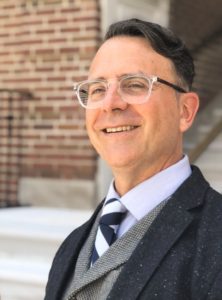Bona Verba from the Headmaster
Dostoevsky’s proclamation that “beauty will save the world” hangs in the air like a half-formed chord, a symphonic fragment waiting for resolution. What is this beauty that wields such salvific power? Is it a physical form, a Platonic ideal, or a whisper from eternity encoded in the shimmer of a sunset or the vaulted arches of a Gothic cathedral? To answer, one must first plunge into the classical triad of goodness, beauty, and truth, those ancient signposts pointing toward the infinite. Beauty, in this triumvirate, entices the soul toward higher realities, a radiant invitation to transcend the squalor of mere material existence. But how do we discern beauty in a world, where the sublime is too often overwhelmed by the clamoring din of cynicism and kitsch?
The classical tradition sees beauty not as a subjective whim but as an objective reality, a harmony of parts ordered toward their proper end. Whether in the golden proportions of a Doric column or the swelling lines of a symphony, beauty reveals itself in the interplay of symmetry, proportion, and clarity. This is why the ancients could gaze upon nature—each tree, river, and star—and see in its grandeur the fingerprints of the divine. To them, beauty was not an escape but a bridge, a portal through which one might glimpse the eternal truths veiled by the mundane.
Today, the search for beauty is as urgent as ever, for it is beauty that calls us out of ourselves. It is found in people whose lives reflect virtues luminous as stained glass, in landscapes untouched by the restless hand of industry, and in art that dares to whisper truths too profound for prose.
Architecture, too, remains an enduring locus of beauty: the soaring grace of a cathedral rib vault or the austere precision of a Palladian façade reminds us that the built environment can embody not just function but aspiration. Such forms summon the human spirit upward, as if to say, Here is what you were made for—this symmetry, this splendor, this communion with the infinite.
It is this upward call that Cincinnati Classical Academy answers, embedding beauty into the core of our mission. Here, the education of young minds is inseparable from the formation of their souls. Students are taught to discern and delight in the beautiful, not merely as aesthetic preference but as an ethical imperative.
Through the study of Latin, they encounter the precision of language as an act of order and truth. In Homer’s epics, they trace the interplay of valor, love, and tragedy rendered in poetry that humbles the heart. In architecture, they study the cathedrals and colonnades of the West, learning how stone and space can speak the language of eternity.
Even the culture of the school itself reflects the pursuit of beauty: from the discipline instilled in the classroom to the solemnity of shared rituals (the singing of the alma mater, the handshake greeting each day, the awarding of virtue cards at school assemblies, etc.), every detail aims to cultivate in students a deep love for the good, the true, and the beautiful. This formation is no mere ornament; in a world that often equates ugliness with authenticity and chaos with creativity, the ability to perceive beauty is an act of resistance, a defiant affirmation that some things are eternally worth cherishing.
Dostoevsky’s beauty is not a passive adornment; it is an active force, a spark that kindles the embers of wonder and awakens the soul to its divine destiny. To love the beautiful is to stand on the edge of the infinite, to see in every leaf, every sonnet, and every act of courage as a reflection of the world as it was meant to be.
In this way, beauty does indeed save the world, not by altering its course, but by revealing the path to what lies beyond.
Torches Up!
Mr. Michael Rose
Headmaster

Mr. Michael Rose
Meet the Headmaster
Mr. Rose has taught various courses at Brown University, Cincinnati Moeller, and The Summit Country Day School. As a part of his degree work in education, Mr. Rose’s research interests included the Great Books curriculum, the Paideia teaching method, and the “effects of emerging digital technology on student reading, writing, and researching.” Read More

